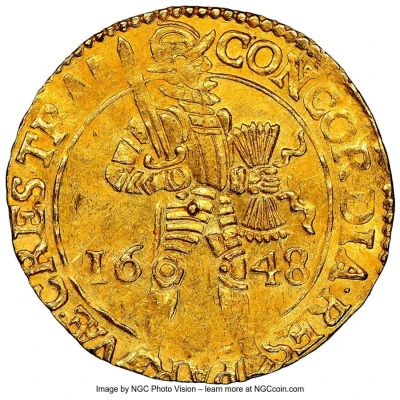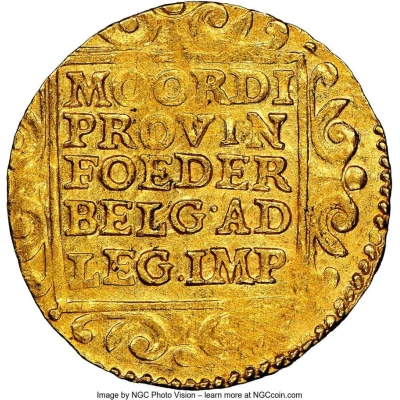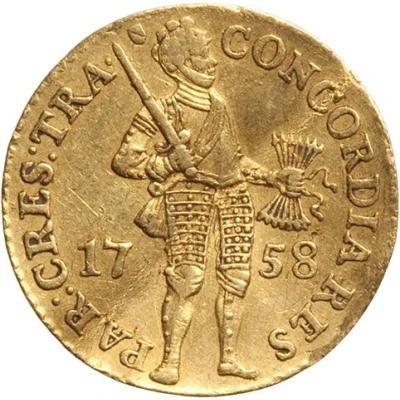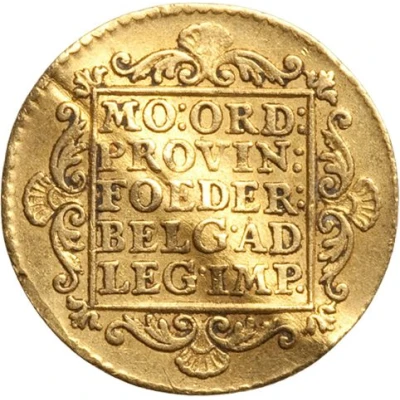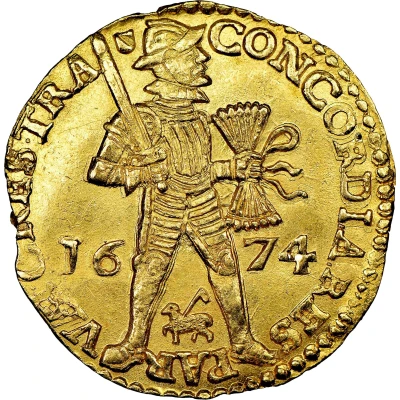
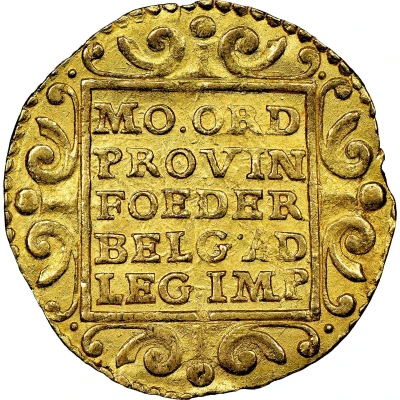

© Heritage Auctions
1 Ducat Middle type
| Gold (.986) | 3.5 g | 21 mm |
| Issuer | Province of Utrecht (Dutch Republic) |
|---|---|
| Type | Standard circulation coin |
| Years | 1674-1735 |
| Value | 1 Ducat |
| Currency | Gulden (1581-1795) |
| Composition | Gold (.986) |
| Weight | 3.5 g |
| Diameter | 21 mm |
| Shape | Round (irregular) |
| Technique | Hammered |
| Orientation | Variable alignment ↺ |
| Demonetized | Yes |
| Updated | 2024-10-06 |
| Numista | N#323149 |
|---|---|
| Rarity index | 87% |
Reverse
Inscription on five lines, within ornate square tablet.
Script: Latin
Lettering:
MO · ORD
PROVIN
FOEDER
BELG · AD
LEG · IMP
Unabridged legend: Moneta ordinum provinciarum foederatorum Belgii ad legem imperii
Translation: Coin of the United Provinces of the Netherlands issued in accordance with the law
Comment
Two mintmaster marks are known:- an agnus dei 🐑
- a rose ✿
The catalogs treat this type as follows:
1674 - 1676 (agnus dei) KM#7.3, Delmonte #963, CNM 2.43.44
1679 - 1717 (rose) KM#7.4, Delmonte #963, CNM 2.43.44
1718 - 1735 (rose) KM#7.4, Delmonte #965, CNM 2.43.45
1724 mintage:
© Heritage Auctions
Akerendam was a ship of the Dutch East India Company (VOC), built in 1724. On 19 January 1725, the Akerendam left in convoy with two other ships, heading for Batavia with a crew of 200 people and 19 chests of gold and silver on board. On 8 March 1725 the Akerendam drifted in a snow storm and sank near the cliffs of Runde island (Norwegian west coast). Despite the fact that the ship was wrecked close to the shore there were no survivors.
During the next months, 5 chests of coins were recovered. No more was found and the site was forgotten until Swedish and Norwegian sports divers rediscovered the wreck site in 1972. Although little remained of the ship, about 57,000 gold and silver coins were recovered. The 6,600 gold coins were mostly the rare Dutch gold ducats, minted in Utrecht in 1724; prior to this find only a handful of these ducats were known. Norway's largest coin treasure is also referred to as 'the Runde Treasure'.
The Norwegian share of the Runde treasure was divided between the University of Oslo’s Coin Cabinet and Bergen Maritime Museum. In January 2011, some of the coins from the Maritime Museum were transported back to the island for an exhibition at Runde Miljøsenter. The divers' portion of 75% of the treasure was auctioned in Switzerland in 1978.
Interesting fact
The 1 Ducat coin was used as a means of payment and was widely accepted in trade, not only in the Dutch Republic but also in other European countries. It was considered a reliable and stable currency, and its value was tied to the value of gold, which made it a popular choice for merchants and traders. The fact that it was made of gold also made it a symbol of wealth and prosperity, and it was often used as a gift or reward for special occasions.
Price
| Date | Mintage | VG | F | VF | XF | AU | UNC |
|---|---|---|---|---|---|---|---|
| 1724 ⬕ ✿ | - | - | - | - | - | - |
Values in the table are based on evaluations by sales realized on Internet platforms. They serve as an indication only for 1 Ducat (Middle type) 1674-1735 coin.
